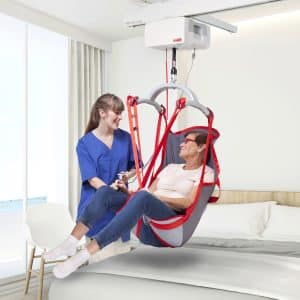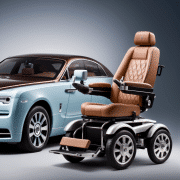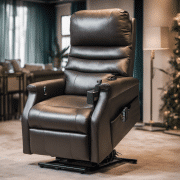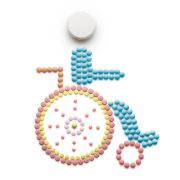Types of Hoists in Aged Care & How to Choose One
Patient hoists, also known as hoists or patient lifts, play a crucial role in aged care settings by providing a safe and efficient way to lift and transfer patients with mobility challenges. These devices come in various types, each designed to cater to specific needs and circumstances. In this article, we will explore the different...
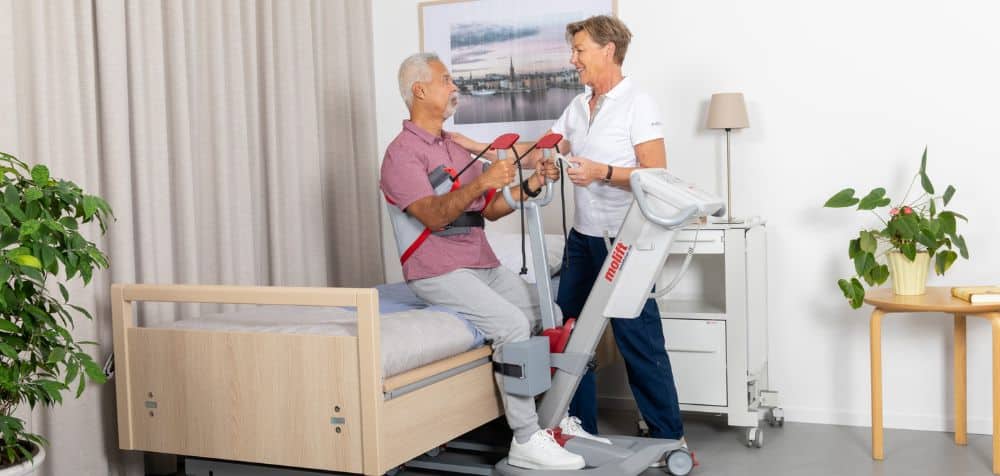
Patient hoists, also known as hoists or patient lifts, play a crucial role in aged care settings by providing a safe and efficient way to lift and transfer patients with mobility challenges. These devices come in various types, each designed to cater to specific needs and circumstances. In this article, we will explore the different types of hoist in aged care, key factors to consider when choosing a hoist, safety guidelines, caregiver training requirements, and techniques for maximising comfort during patient transfers.
Key Factors to Consider When Choosing a Patient Hoist:
- Weight Capacity: Determine the maximum weight the hoist needs to support to ensure it suits the patient’s needs.
- Mobility Needs: To select the appropriate hoist, consider the patient’s mobility level and the type of transfers required (e.g., sitting to standing, lying to sitting).
- Environment: Assess the physical space in the aged care facility to determine whether a ceiling track hoist, portable hoist, or floor-based hoist is most suitable.
- Ease of Use: Look for hoists with user-friendly controls and intuitive design to simplify operation for caregivers.
In aged care and other healthcare settings, a wide range of lifters is available to assist with patient transfers. These lifters come in various types, each designed to cater to specific needs and circumstances. Here you will find the different types of hoist in aged care.
Electric vs Manual Hoists:
Electric hoists are powered by electricity, making them effortless to operate and ideal for high-frequency use. They often have features like battery backup and powered legs for added convenience. Manual hoists, on the other hand, rely on manual pumping or cranking to lift patients. They are suitable for occasional use and may require more effort from caregivers.
Standing, Sitting & Ceiling Track Hoists:
- Standing Hoists: Designed for patients with some weight-bearing capacity, standing hoists assist individuals in moving from sitting to standing. These hoists can enhance patient mobility and independence.
- Sitting Hoists: Sitting hoists, also known as transfer chairs, are used to lift and transfer patients from one seated position to another. They benefit individuals who can maintain a sitting position but may require assistance during transfers. They are considered to be a manual hoist and like ceiling hoists, they take up minimal floor space.
- Ceiling Track Hoists: These hoists utilise a track system installed in the ceiling, allowing smooth and efficient transfers throughout the care facility. Ceiling track hoists are particularly useful when space is limited, or transfers need to occur between different rooms. A structural engineer is often required to ensure the track systems met specifications, particularly when ceiling tracks are required to extend through door frames. In many cases, a ceiling hoist is the preferred solution as they are a stationary hoist, thereby remaining in a fixed position.
Portable & Floor-Based Hoists:
- Portable Hoists: These are mobile, electric hoists and easily moved between rooms. They are typically lightweight and compact, making them suitable for use in different locations within the facility or for transportation purposes.
- Floor-Based Hoists: Floor-based or mobile hoists are sturdy and stable units that remain stationary on the floor. They are an electric hoist, providing a secure lifting solution and are often preferred when ceiling-mounted options are unavailable.
Guidelines for Finding the Right Hoist:
- Consultation: Involve healthcare professionals and occupational therapists to assess the patient’s needs and recommend the most suitable hoist type.
- Compatibility: Ensure the hoist is compatible with the patient’s mobility aids, such as wheelchairs or specialised cushions.
- Adjustability: Look for hoists with adjustable features to accommodate patients of varying sizes and shapes.
Common Safety Tips for Using a Hoist:
- Perform Regular Maintenance: Conduct routine inspections and maintenance checks to maintain hoists in good working condition.
- Check Sling Compatibility: Ensure that the sling used with the hoist is compatible, properly fitted, and securely attached to prevent accidents.
- Communicate with the Patient: Explain the transfer process to the patient and obtain their cooperation and consent before initiating any movement.
Caregiver Training Requirements for Using a Hoist
Using an aged care hoist requires caregivers to undergo proper training to ensure the safety and well-being of themselves and their patients. Here are some important training requirements for caregivers using a hoist
- Manufacturer’s Training: Caregivers should receive comprehensive training directly from the manufacturer or authorised representatives of the different types of hoisting equipment. This training covers the specific features, operation, maintenance, and safety guidelines for the particular hoist model.
- Facility-Specific Training: Aged care facilities should provide caregivers with facility-specific training programs. These programs should include policies and procedures related to hoist usage within the specific care setting. Caregivers should be familiarised with the facility’s protocols, emergency response plans, risk assessments, and any specific guidelines for using hoists in that environment.
- Manual Handling Techniques: Caregivers should receive training in proper manual handling techniques, including body mechanics, lifting and transferring methods, and strategies for preventing injuries. This training helps caregivers understand how to use their bodies efficiently and safely during hoist transfers, reducing the risk of strains, sprains, and other musculoskeletal injuries.
- Hoist-Specific Skills: Caregivers should learn the skills required to safely operate the specific type of hoist used in their facility. This includes understanding the control mechanisms, attaching and adjusting slings, managing hoist movements, and ensuring the patient’s comfort and safety throughout the transfer process.
- Risk Assessment and Safety Measures: Caregivers should be trained in conducting risk assessments before each transfer. They should be able to identify potential hazards, assess the patient’s condition, and determine the appropriate use of equipment and techniques to ensure a safe transfer. Training should also cover safety features, such as brakes and locks, and how to address potential risks during hoist transfers.
- Communication and Patient Care: Effective communication skills are crucial for caregivers using hoists. Training should emphasise the importance of clear and respectful communication with patients, including explaining the transfer process, gaining their consent, and ensuring their comfort and dignity. Caregivers should also be trained to recognise signs of distress or discomfort in patients and respond appropriately.
- Equipment Maintenance and Inspections: Caregivers should receive training on the proper maintenance and inspection of hoist equipment. They should be knowledgeable about regular maintenance routines, including cleaning, battery management (if applicable), and periodic reviews to ensure the hoists are in good working condition.
- Ongoing Education and Refresher Courses: Caregiver training should not be a one-time event. Regular refresher courses and continued education are essential to reinforce proper techniques, introduce new equipment or procedures, and stay updated on best practices in hoist usage. Caregivers should have access to continued learning opportunities to enhance their skills and knowledge in hoist operations and patient transfers.
Aged care facilities must establish clear training programs and ensure that all caregivers receive the necessary training to safely and effectively use hoists. By investing in caregiver training, facilities can promote a culture of safety, minimise the risk of accidents or injuries, and provide high-quality care for patients.
Preferred Suppliers for the Healthcare Industry Since 2003
Patient Handling is founded on a sound base of great staff, great products and great partners. We strive to put our clients needs above all else and focus on well thought out solutions for complex needs.



Receive latest news
Contact Us
We are an online store only. Please contact us if you would like a product specialist to assist with your purchase.

